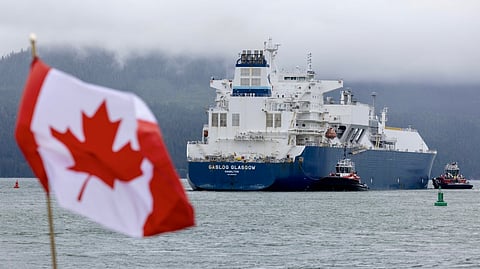

LNG Canada announced on November 6 that its second liquefaction train (Train 2) has entered production at the Kitimat export terminal, doubling the facility’s capacity to 14 million tonnes per annum (mtpa).
The milestone follows the first train’s startup in June 2025 and initial cargo shipment on June 30. Startup activities for Train 2 began in early October, with the unit now operating in tandem with Train 1, enabling full Phase 1 operations.
The $18-billion LNG Canada project — a joint venture of Shell (40%), Petronas (25%), PetroChina (15%), Mitsubishi Corporation (15%), and KOGAS (5%) — is Canada’s first large-scale LNG export facility. It processes natural gas from the Coastal GasLink pipeline and ships liquefied product primarily to Asian markets.
Since June, the terminal has exported over 20 cargoes. The project maintains a greenhouse gas intensity approximately 60% below the global average for LNG production, according to company data.
No final investment decision has been announced for Phase 2, which would add two more trains and boost total capacity to 26–28 mtpa. The expansion remains under regulatory review.